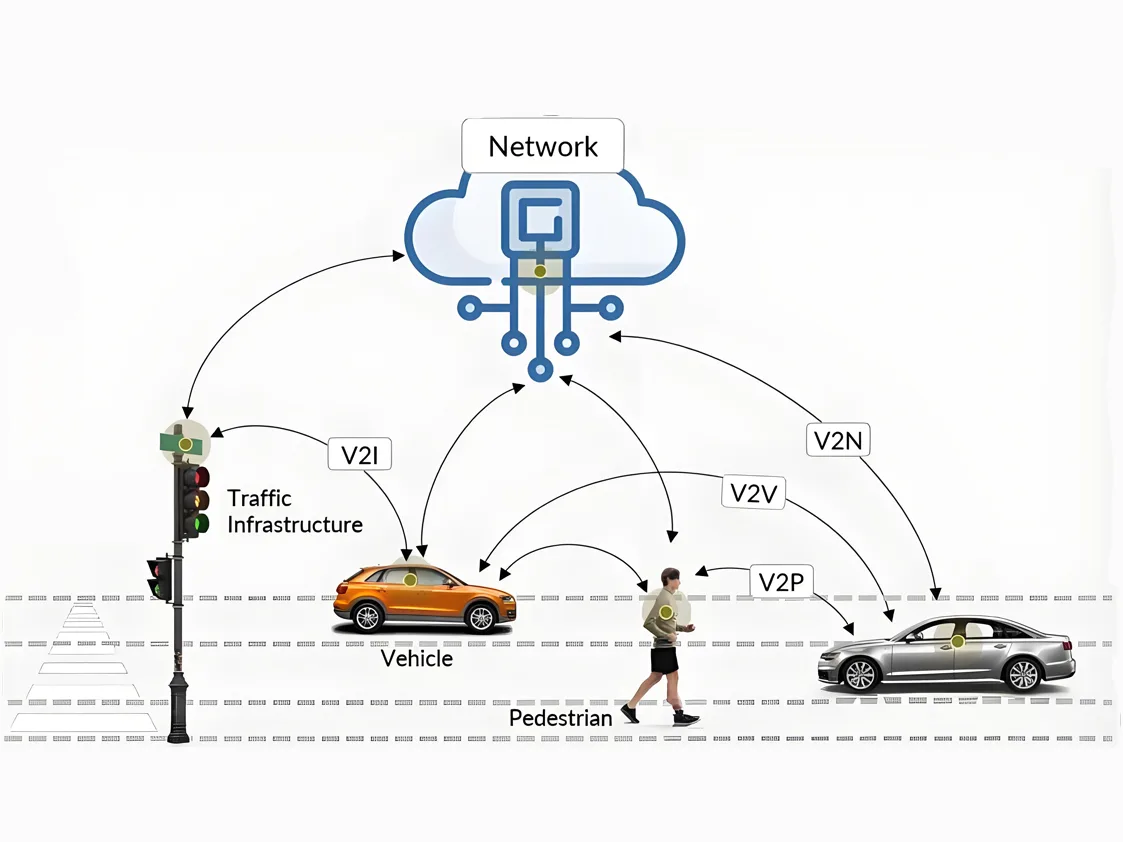A revolução tecnológica e oportunidades de mercado para antenas automotivas
A indústria automotiva global está passando por uma mudança transformadora em direção à eletrificação, inteligência, e conectividade. De acordo com relatórios de mercado verificados, O mercado de antenas inteligentes automotivas deve crescer de 3.2Billionin2022to5.6 bilhão por 2030, em um CAGR de 8.5%. Esse crescimento é impulsionado por avanços na direção autônoma, 5Comunicação G-V2X, e fusão de sensores. As antenas automotivas modernas evoluíram de receptores AM/FM básicos para sistemas multifuncionais que suportam a comunicação multibanda, Posicionamento de alta precisão, e latência ultra baixa.

Este artigo explora inovações de ponta na tecnologia de antena automotiva, Desafios críticos em Projeto de PCB, e tendências futuras, Suportado pelo Market Insights, princípios técnicos, e estudos de caso de engenharia.
Categorias técnicas de antenas automotivas & Inovações de integração de PCB
Miniaturização e desempenho de alta frequência nas antenas planares
As antenas planares dominam os projetos modernos de veículos devido à sua arquitetura de baixo perfil e integração. Um típico Antena de patch microStrip consiste em um patch irradiante, substrato dielétrico, e plano de terra operando através de frequências a partir de GPS (1.575 GHz) para o radar de onda milimétrico (77–81 ghz).
Exemplo de avanço:
- Antenas de remendo empilhadas: PCB multicamadas O empilhamento aumenta a largura de banda por 15% ao reduzir a interferência de polarização cruzada, Ideal para comunicações por satélite e 5G-V2x.
- Ultra-Wide Band (UWB) Antenas: Operando em 3,1-10,6 ghz, Eles permitem o posicionamento do nível de centímetro para obter sistemas de entrada e prevenção de colisão sem chave. Os projetos de PCB requerem materiais de alta frequência, como Rogers RO4350B e simulação eletromagnética para dimensões ideais de patches.
Design adaptativo de antenas não-planares para ambientes complexos
O Antena de barbatana de tubarão exemplifica o design não-planar, Integração do GPS, Wi-fi, 4Módulos G/5G, e tecnologia MIMO. Por exemplo, Um modelo de veículo de luxo apresenta uma antena de garagem de 8 elementos alcançando 1 Taxa de transferência de GBPS via LTE 4 × 4 MIMO.
Desafios de engenharia & Soluções:
- Redução de acoplamento mútuo:
- Isolamento espacial: Espaçamento vertical > L/4 (por exemplo, 12.7 mm em 5.9 GHz).
- Diversidade de polarização: Polarização vertical/horizontal híbrida.
- Otimização do solo: Estruturas de solo desertas (DGS) sobre PCB suprimir ondas de superfície.
Matrizes de radar de onda milimétrica: The “Visual Cortex” of Autonomous Driving
24 Ghz e 77 GHZ Millimeter Wave Radars são fundamentais para o ADAS. No 77 GHz (comprimento de onda: 3.9 milímetros), Matrizes em fases permitem detecção de longo alcance. Uma matriz de patches de microfita 4 × 4 atinge ± 45 ° de direção de feixe com largura de feixe de 8 ° e alcance de 250 metros.
Principais requisitos de PCB:
- Substratos ultra-baixa perdas (por exemplo, PTFE).
- Alinhamento perfurado a laser para precisão.
Fórmula de direção de feixe:
O ajuste de fase dinâmica permite uma formação de feixe em tempo real para rastreamento de pedestres/veículos.
Desafios técnicos e inovações no design de PCB
Seleção e processamento de material de alta frequência
PCBs de ondas milimétricas exigem controle rígido da constante dielétrica (DK ± 0,05) e perda tangente (Df <0.002). Rogers RO3003 (Dk = 3,0, Temp. coeficiente: -3 ppm/°C) é amplamente adotado. A gravura plasmática garante a rugosidade da borda da linha de transmissão <1 μm.
Tecnologia de PCB flexível para antenas conformes
PCBs flexíveis (FPCs) adaptar -se às superfícies curvas. O leste da China da China de Jiaotong, em forma de pentagrama, a antena FPC usa substratos de poliimida (0.1 mm espessura) e simulações de feko para alcançar 2.3 ganho de dB em 2.4 GHz. A incompatibilidade de impedância induzida por Bend é atenuada por traços serpentinos ou camadas dielétricas de gradiente.
EMC e gerenciamento térmico
Fechar proximidade da antena (por exemplo, 30 cm entre o radar de barbatana e o ADAS) causa interferência (-15 dbm). As soluções incluem:
- Cavidades de proteção: Metalizado por meio de matrizes Crie gaiolas Faraday.
- Planejamento de frequência: Separar 5.9 GHZ Comms e 77 Bandas de radar GHZ.
- Simulação térmica: ANSYS ICEPAK otimiza a distribuição da densidade de energia.
Tendências futuras: De componentes funcionais a nós inteligentes
5Reconfiguração dinâmica de G-V2x e AI
Pós-2025, 5G-V2X entregará 20 Velocidade de GBPS e 1 MS Latência. Antenas reconfiguráveis dinamicamente (Retirou) Usando diodos de pino ou comutadores MEMS Ative a comutação de banda de frequência automática (por exemplo, 700 MHz em túneis).
Revolução material: Metasurfaces e cristais fotônicos
Antenas metamateriais com índices de refração negativos encolher tamanhos para λ/10. A antena de Metamaterial-on-PCB de Yokowo alcança 5 DBI ganho em 2.4 Ghz com 1.2 mm espessura. Substratos de cristal fotônico suprimem ondas de superfície, Aumentar a eficiência de >85%.
Design de PCB modular e atualizações de OTA
Tesla’s patented “Antenna Matrix” supports OTA beam pattern updates. A direção de feixe acionada por IA otimiza a comunicação V2I, ativado por PCBs IDH com 30/30 μm linha/espaço.
Conclusão: Transformação da indústria através da convergência tecnológica
PWC prevê 55% de veículos novos serão elétricos por 2030, com 40% de milhas conduzidas autonomamente. Antenas automotivas estão evoluindo para nós inteligentes nas redes de transporte inteligente. Sucesso nisso $1 trilhões de mercado depende de avanços na miniaturização, eficiência energética, e colaboração multidisciplinar entre designers de PCB, Engenheiros de RF, e cientistas materiais.
Este artigo explora inovações de ponta na tecnologia de antena automotiva, Desafios críticos no design da PCB, e tendências futuras, Suportado pelo Market Insights, princípios técnicos, e estudos de caso de engenharia.